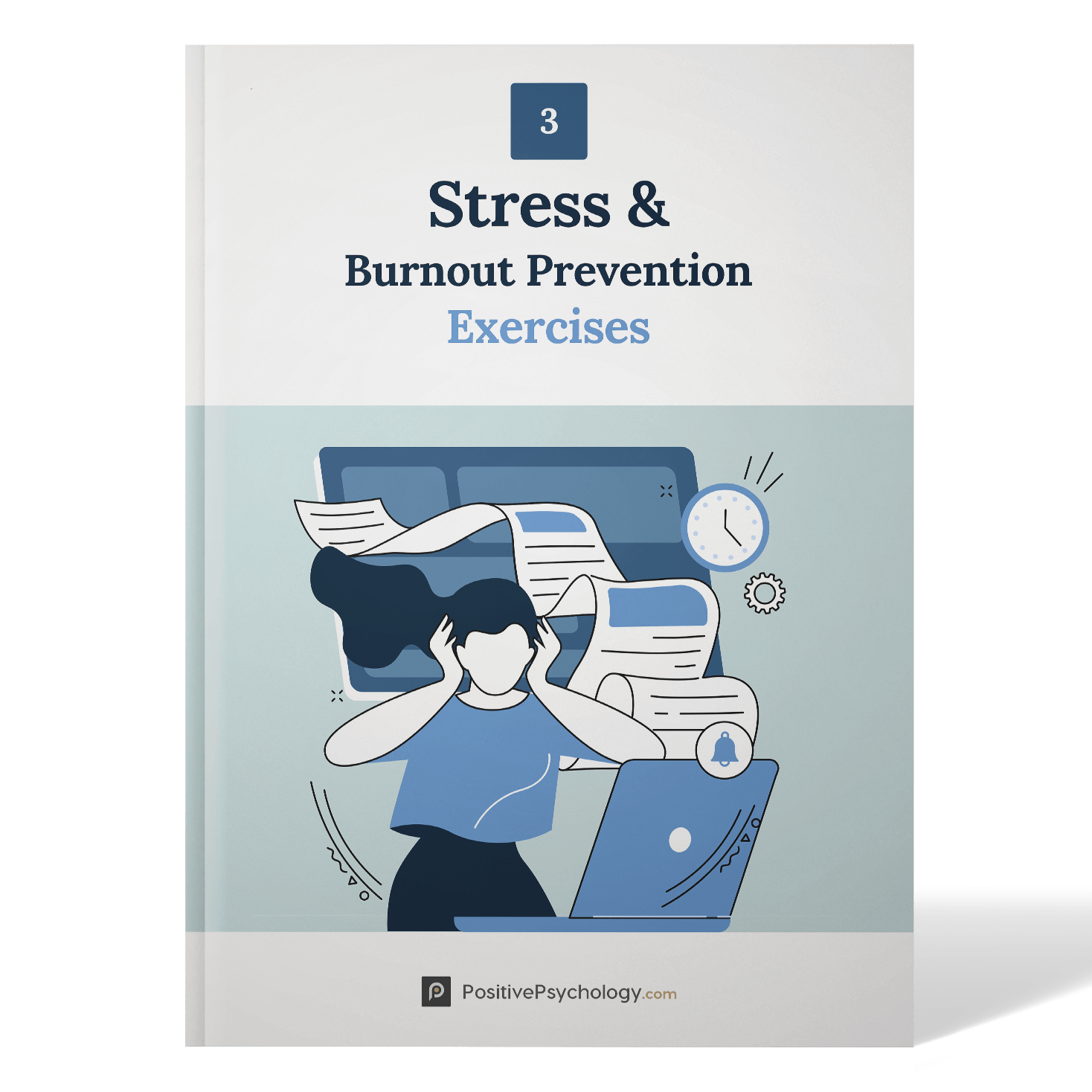

We have all felt stress and its effects. After all, the experience of feeling threatened and unable to manage stress can significantly impact how we think, feel, and behave.
Short-term, manageable stress levels can help us grow our resilience to future challenges and motivate and energize us to act. And yet, chronic, ongoing stress can harm us physically and mentally, impacting our relationships with ourselves and those around us (Boniwell & Tunariu, 2019).
This article explores stress, its impact, and the risk of burnout. We then explore techniques, exercises, and tips to help us reduce its harmful effects and reframe how we see pressure while regaining our sense of control.
Before you continue, we thought you might like to download our three Stress & Burnout Prevention Exercises (PDF) for free. These science-based exercises will equip you and those you work with, with tools to manage stress better and find a healthier balance in your life.
While stress in small, infrequent doses may not be harmful, “prolonged stressful living can cause havoc on our physical, emotional, and psychological wellbeing” (Boniwell & Tunariu, 2019, p. 132).
Indeed, some day-to-day stress is normal, but it is essential to spot when stress levels are too high, too often. Better awareness can be helpful, including watching out for the following physical indicators (WebMD, 2020):
Each physical indicator can become part of our self-awareness and may suggest when stress is getting out of hand.
Some stress counselors use biofeedback technology to assess stress levels, potentially using (modified from Blackett, n.d.):
Whatever form self-monitoring takes, noticing the early warning signs of burnout and stress can prove helpful in managing our self-care and wellbeing (Bush, 2015).

Small experiences of stressors can result in temporary stress, while helping us face future frustrations, challenges, disappointments, and angst.
And yet, while such ‘stress inoculation’ is associated with resilience, in excess or too frequent, stress can be damaging to both mind and body (Boniwell & Tunariu, 2019).
Indeed, whether a single event or ongoing, stress can result in several ‘thinking traps,’ including (Boniwell & Tunariu, 2019):
Research shows that work can be an extreme source of stress, particularly in high-pressure environments such as healthcare. A 2016 study exploring stress and coping in oncology, suggested that stress levels could be reduced in response to more support from management and better staffing levels (Ko & Kiser-Larson, 2016).
Preventing burnout within the workplace has received much more attention in recent years. And while a unified definition has proven challenging, in 2019, the World Health Organization categorized it as an occupational phenomenon that results from unsuccessfully managed chronic workplace stress (HBR guide to beating burnout, 2021).
Most importantly, they recognized the organization’s role in causing it and their subsequent duty to protect their employees (HBR guide to beating burnout, 2021).

These detailed, science-based exercises will equip you or your clients with tools to manage stress better and find a healthier balance in their life.